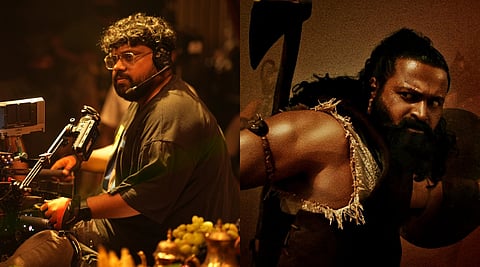

Arvind Kashyap vividly remembers the first time he picked up his camera after months of intense storyboarding for Kantara Chapter 1. “No matter how much preparation we did, we always felt underprepared,” he says. Coming off the seismic impact of Kantara (2022), he knew the sequel demanded more than just technical mastery. It required building an entire world from the ground up—rooted in myth, layered in folklore, and scaled for a global audience. That world of Kantara is all set to expand on October 2, when Vijay Kiragandur’s Hombale Films, with Rishab Shetty at the helm, and as lead along with Rukmini Vasanth and others, unveil Kantara Chapter 1. For Arvind, who has journeyed with Rishab since their Lucia days, it’s the culmination of years of collaboration, sweat, and sleepless nights. “None of us had experience with films beyond a medium budget,” he admits. “But there’s always a starting point. For this film, that starting point was Kundapura—where we all moved eight months before the shoot, just to figure out how to pull this off.”
The team spent weeks in marathon meetings, dissecting logistics, drawing frames, and creating a playbook for a shoot that eventually stretched to 150 relentless days over six months. “This has been the most hectic, jam-packed shoot of my career. From December to June, we barely rested—two or three days off at best. Shooting amid nature, with a 1,000-member crew, while planning VFX alongside production—it was unlike anything I’ve ever seen.” Arvind and Rishab share an effortless understanding, one that has been built over years of working together. “That sync has always been there. But achieving it on a film of this scale was still a challenge,” he says. His earlier experience assisting directors and observing large sets across industries proved invaluable. “I had seen how big-budget films function, and that helped us when we jumped into something this massive.”
If the technical scale was daunting, the creative burden was heavier still. The cinematographer’s work on Kantara had been widely celebrated, raising expectations for the prequel. “The recognition was overwhelming, and it put pressure on me to do better. Two people calmed me. Rishab told me not to carry the baggage of the previous film. And producer Vijay Kiragandur reminded me that audiences loved the frames of Kantara. He said, ‘Maintain the essence, maintain the colour space and frame—but elevate it.’ That became my biggest challenge.” Arvind says that he got good support from production designer Banglan and costume designer Pragathi Shetty to evolve the palette. “We created an upgraded version of what audiences loved. During preparation, I watched Kantara several times, but once we started shooting, I stopped. I wanted no baggage. The visuals had to feel fresh.”
According to him, the visual tone of Kantara Chapter 1 mirrors its storytelling—two contrasting worlds, one raw and rooted, the other extravagant and lavish. “The challenge was not blending them but connecting them, keeping a common underline,” he explains. Despite the temptation of new technology, Arvind stuck to basics. “We used the same camera as Kantara. I believe in elevating the narrative, not just the technicality.” His approach has always been rooted in story. “Good cinematography only works when it serves the storytelling. That’s why I get involved in narration right from the start. When Rishab narrated Kantara Chapter 1, I was excited and scared at the same time. Excited by the possibilities, scared because I wondered how to achieve them.” The bond with Rishab has only deepened. “I’m grateful to him because I am where I am because of him. He asked me to be the strong shoulder for this film, and that’s why I based myself in Kundapura for two years. Shooting in his hometown helped me understand his upbringing and why he carries these stories.” Golden-hour shots proved the toughest. “Moving those technicians, actors, and equipment by 5 AM every day was the hardest challenge. My eight-member team was my backbone. They stayed with me through sleepless nights. And what makes me proud is the pride of Kannada technicians—everyone gave their best, even light boys with the least stake.”
CG was treated as a tool, not a crutch, in Kantara Chapter 1, explains Arvind. “We only used it when the camera couldn’t capture something. Our base has always been the visuals.” Arvind, who has already wrapped a project with Prithviraj Sukumaran and is preparing for a Telugu film with Balakrishna directed by Gopichand, still calls Kantara Chapter 1 his most formative experience. “This film taught me more than any other. It gave me clarity and the responsibility to give audiences a film they’ll be proud of.” And will it recreate the devotional intensity of Kantara’s unforgettable climax? “It’s all on the same line,” he promises. “It will evoke the same gratitude, fulfilment, and overwhelming emotion,” he signs off.